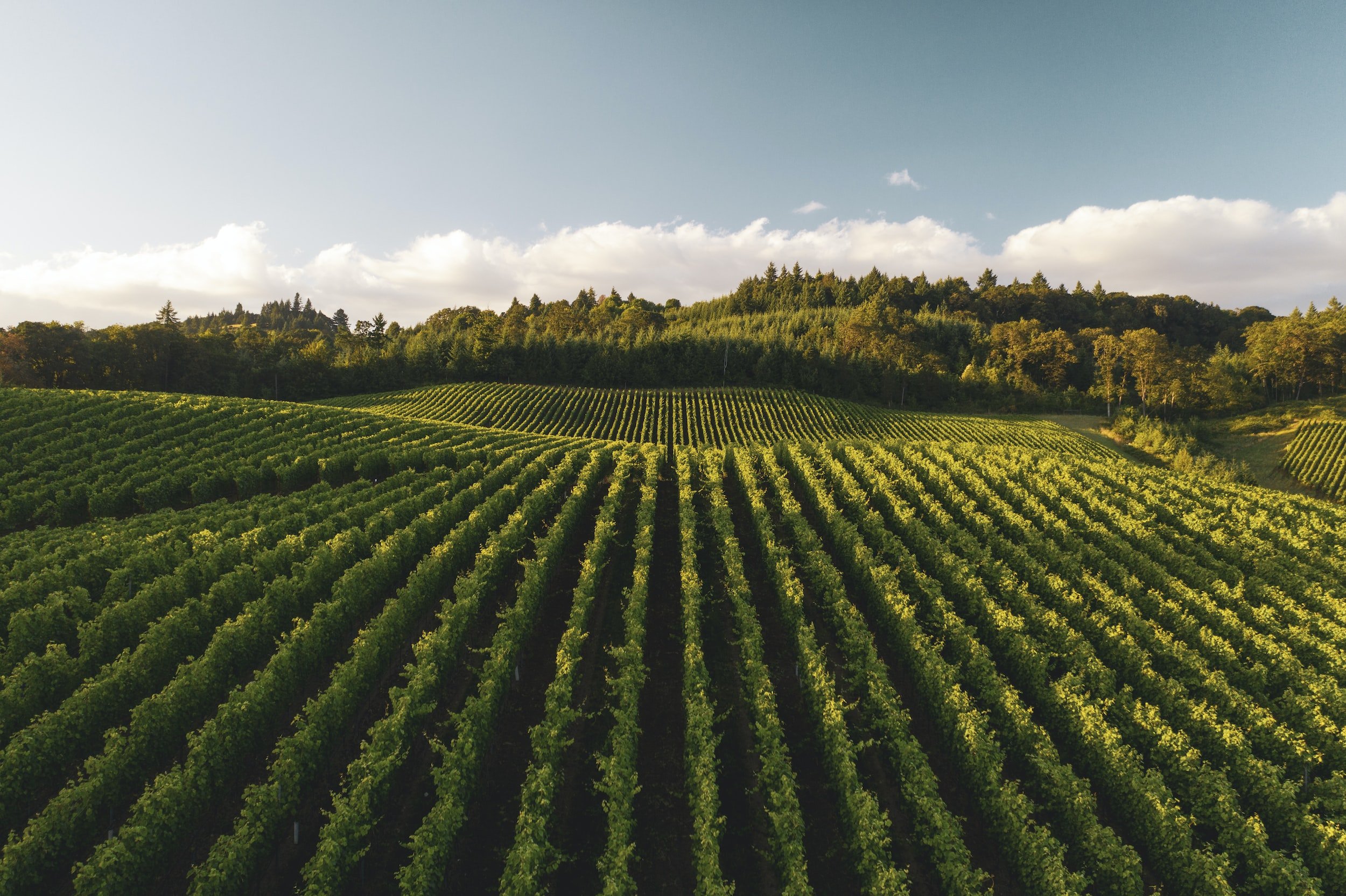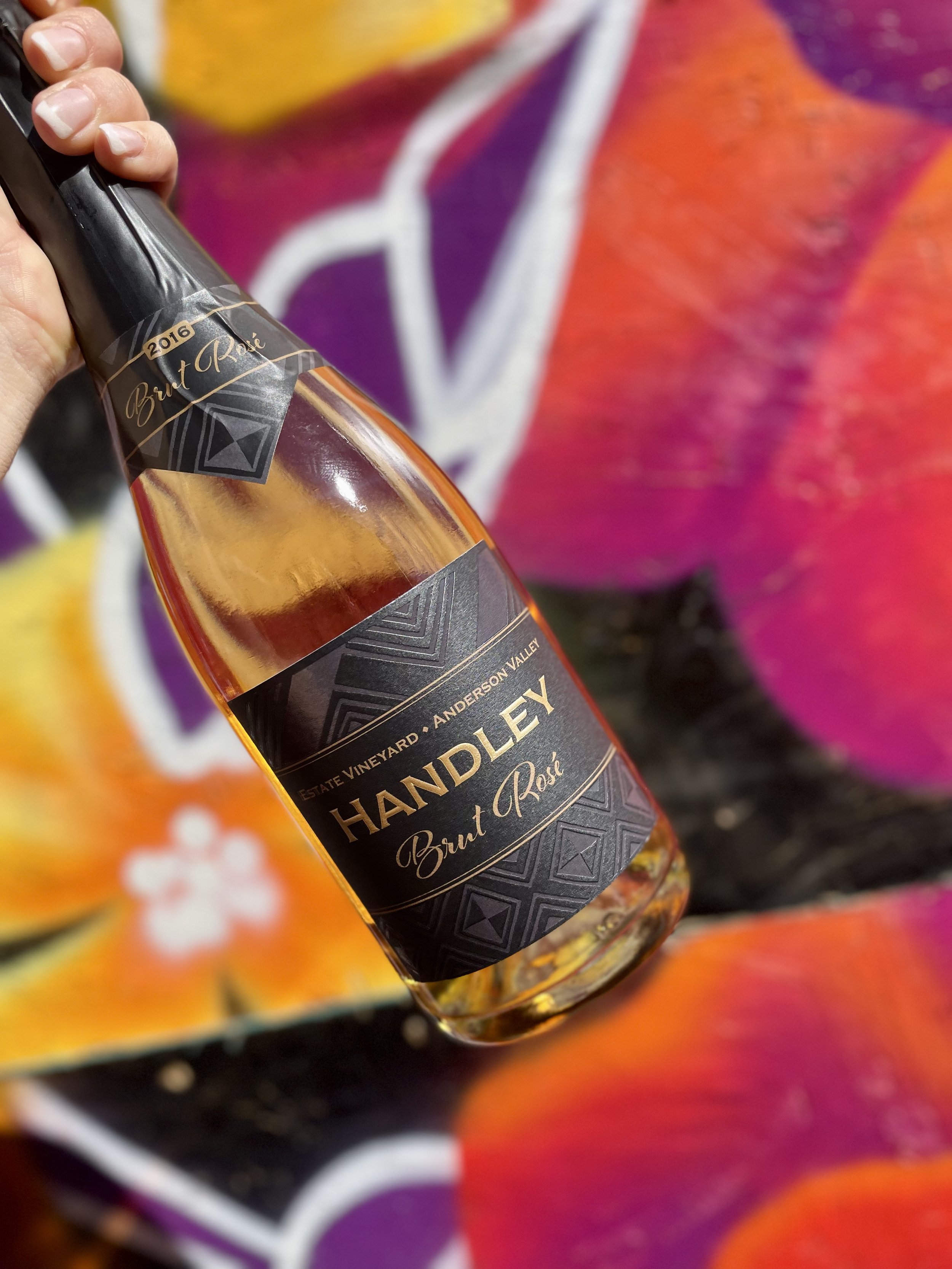
Sustainability in Wine
The Wine Ship is dedicated to championing a wine industry that can withstand the test of time. This means working to educate wine enthusiasts on what it means to practice sustainability in wine.
In honor of Earth Month, I’m highlighting the various practices and philosophies behind sustainable wine and sharing standout producers and bottles that focus on earth-friendly initiatives in the winery and beyond.
Check back throughout the month for new content every week!
Cheers to our planet! - Montana Rae, Founder & Sommelier
The meaning of the term varies from region to region and producer to producer. While growing and production practices for organics and biodynamics are stringent and well-defined, the same can't be said for sustainability. Instead, growers and organizations local to specific areas take it upon themselves to adopt and maintain sustainability commitments in their production.
Biodynamic farming and winemaking track the cycles of the moon and planets to help determine when planting, harvesting, winemaking, and even tasting should occur. Viticulture, however, is just one piece of the biodynamic puzzle. The practice uses a series of ‘preparations’ applied to soil and plants in homeopathic doses and utilizes estate farm-generated outputs like composted manure.
Discover Earth-Friendly Wines
When I come across a sparkling wine that has it all, I have to share it. Handley Estate Vineyard Brut Rosé 2016 is a fine blend of Pinot Noir and Chardonnay made in the champagne method. The grapes are certified organic and the winery was founded by a trailblazer of a lady, Milla Handley back in the 1980s. A stunning sparkling rosé, this bottle comes to Denver through the distribution portfolio of Master Sommelier, Doug Krenik.
Becker Family Pinot Gris is a wine that changes minds and perceptions about everything from Germany to Pinot Gris to orange wine to rosé. It’s wonderfully fresh and easy to drink at just 12.9% alcohol. In addition to its gorgeous hue, the time spent with the skins also imparts a subtle but marvelous tannin structure to the wine reminiscent of freshly brewed sun tea. Organically and biodynamically farmed.
If you’ve experienced a funky, dare I say stinky, natural wine in the past you’ll be pleasantly surprised by the clean style of Obsidian Wine Co’s ‘Pezsgő’ Pinot Noir Pet Nat. The aromas burst out of the glass with notes of Christmas cranberry, Bing cherry, and Goji berry. Delicious.
In the glass, the Lunaria ‘Coste di Moro’ Montepulciano d’Abruzzo is a rich ruby color so deeply pigmented that it stains the glass as you swirl it. Aromas of black plum and strawberry preserves pop out of the glass. On the palate, the wine is powerful in its tannin structure with the mouthwatering acidity we expect from a great Italian red. The flavors are of stewed black and red fruits with subtle wood notes of toasted nuts, cocoa, and baking spices.
‘Pomagrana’ is a chillable red or ‘rosado’ wine from Spain. Its brilliant shade of fuchsia-red is reminiscent of the color of pomegranate juice. At just 11% alcohol, it’s light and bright on the palate, making it an excellent choice for brunch or early afternoon enjoyment. Before pulling the cork, pop it in the refrigerator or set it in a wine chiller for a fabulously refreshing tasting experience.
To create the first release of Portlandia Sparkling Rosé, the winemaking team created a blend of Syrah and Chardonnay. The Chardonnay provides a linear, high-acid structure and imparts notes of Meyer lemon and white flowers while the Syrah brings depth, complexity, and a mouthfeel that made me do a double take the first time I tried it. To say the least, the wine punches above its $20 price point.
Crafted from estate fruit harvested from the family’s namesake Leonardini vineyard, as well as the Oak Knoll District appellations including the Fawn Park, and Millennium MM Estate vineyards. This bottling represents the highest caliber of Cabernet Sauvignon at the property. The wine is made using hand-selected grapes procured from small blocks within the pristine vineyard site.
This iconic sparkling wine is crafted by Whitehall Lane Winery in Napa Valley using fruit from the Petaluma Gap A.V.A. of Sonoma. Made of 100% Pinot Noir and made in the same method as Champagne, this bubbly offers fine a mousse and creamy texture on the palate. You’ll taste notes of melon, nectarine, Rainier cherry, and pomegranate with a long, mouthwatering finish.
The Portlandia Brut Blanc de Blancs Sparkling is not a wine of Oregon but from Washington State. This departure from the brand’s typical stomping grounds in Willamette Valley did not disappoint! At just under $20 a bottle, I was delighted to see it is made using the traditional Champagne method, or Méthode Champenoise. Sparkling wines made this way demand a high level of hands-on effort by the winery and many months to produce.
Most wine lovers have tasted a classic Pinot Noir from France or Oregon, but have you tried a white Pinot Noir?! Whether you know it or not, there’s a good chance you’ve had a white wine made from black grapes, or blanc de noir, already. Today, we’re taking a look at Left Coast Cellar’s 2019 Estate White Pinot Noir from Willamette Valley, Oregon.

All About Organic Wine
There are farms spread all around the world where people have been applying organic practices for generations, even centuries. Long before the concept of organic certification even existed, they intuitively understood the importance of protecting and preserving the land. We’ll explore the topic of organics in viticulture (winegrowing) in two categories: Certified Organic and Practicing Organic.

Simplified Biodynamics: Full Circle Winegrowing
Biodynamic farming and winemaking track the cycles of the moon and planets to help determine when planting, harvesting, winemaking, and even tasting should occur. Viticulture, however, is just one piece of the biodynamic puzzle. The practice uses a series of ‘preparations’ applied to soil and plants in homeopathic doses and utilizes estate farm-generated outputs like composted manure.












There are farms spread all around the world where people have been applying organic practices for generations, even centuries. Long before the concept of organic certification even existed, they intuitively understood the importance of protecting and preserving the land. We’ll explore the topic of organics in viticulture (winegrowing) in two categories: Certified Organic and Practicing Organic.